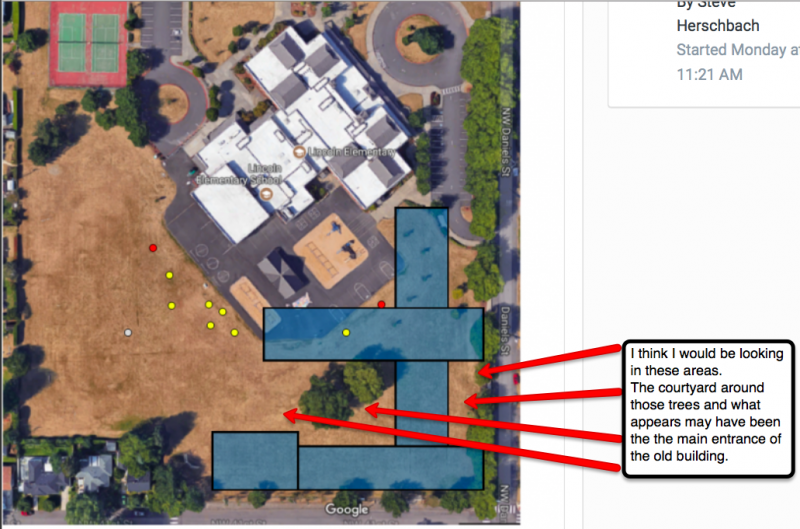Leaderboard
Popular Content
Showing content with the highest reputation on 10/29/2018 in all areas
-
After missing pretty much the entire summer Detecting season do to buying and selling a home and the move that goes with it, I have finally been able to get out on 3 hunts over the last couple weeks.. Armed with my trusty Equinox 800 and the new software update, I was able to muster a few old coins out of some heavily hunted city parks.. I like the update. My depth meter is working better and it seems like the audio modulation has improved.. ?? The high conductor numbers seem a little more squirrelly but I’m digging anything in that range anyway.. I am re-hunting areas that my friend and I have hit hard with the CTX, E-Trac, and V3i. The Equinox has not disappointed! Most of the finds are tricky signals. Either real deep, co-located with other metal, or on edge.. I have never been more confident in a Detector. I found some American and foreign silver with the highlight being the tiny silver 1886 5 cent Canada Fish Scale. Those are tough to find.. Check out how thin this one is compared to the Mercury Dime it’s sitting on. Other notables are the two key date Wheat Pennies.. 1913 and 14 S in decent condition.. Bryan9 points
-
Rick, It was great to meet up with you again, it has been a year since our last hunt. When Ken told me that you were headed back to R-P, I was smiling from ear to ear. Hunting gold with the two of you is about as good as it gets for me. Always grateful for the advice and that pointy finger of yours.8 points
-
...back in the early beepin days, sure wish I’d had the bug back then. Returned yesterday from wandering the sage and gravel of northern Nevada and happy to come home with wonderful memories and just a few hard fought little pieces of sunshine found the last two day of hunting. First 3 days hunted the usual spots with only tiny bits of rust and lead, some faint deep signals I thought sure were gold only to disappoint me. Finally near the end of the 4th day of hunting I drove off looking for some old small workings off the beaten path and after stopping to check and interesting spot was rewarded with a few small pieces for a total of a little over 2 grams. Also stumbled on some cinnabar float and some of it had tiny blood red clear crystals on the surface, eventually found what looks to be the outcrop it came from and dug around it a little just to see if any crystals might be obvious in the surrounding soil. Didn’t see any and not really sure what I’d be looking for or where crystals would tend to form within the structure? Found another interesting piece in a completely different location and kept it for yard art, according to everything I can find about cinnabar it should not be a toxic hazard as long as hands are washed before eating food if the material has been reciently handled?6 points
-
My son and I both own the Equinox 800 and used them on a unique opportunity to hunt a very old place in New England area. In one day of hunting we found 5 large cents with the oldest being 1803, another 1829 and the rest had no date. We also found 2 large flat buttons and one flat cuff button. In my 30 years of metal detecting this was one of the best days of hunting I had. The best part of the day of hunting was sharing the day with my son who found 3 of the large cents. We both love of Equinox 800 detectors. On a side note we went beach hunting the next day and both came up with a silver ring5 points
-
Joe, Some Prospecting trips are tough! Others trips make it look like you might know something that others don’t! Lucky ? coil finding needles in vast open spaces is amazing. As you know, I just got home last night from a two day hunt, picking up nuggets, I left! Think, I’ll take a break and swing on this side of the hill before the snow falls in the high country! Here’s my end poke, Until the next Hunt. LuckyLundy5 points
-
Hi everyone, I’ve had my Equinox 800 for 2 months and I feel like I’m a little late to the party. I’m making up for lost time and getting out every weekend with the Nox, so far I’ve found a US buckle, 1781 half real, 1852 three cent silver, a colonial copper, many colonial buttons, lots of CW bullets, miscellanious CW relics, and 1800s jewelry. Almost all of those things came from spots that I previously hunted thoroughly with my Whites V3i. My 15 x 12 coil had shipped and is due to arrive in Northern Virginia on Wednesday. I’m looking forward to taking it back to the same spots and seeing what else I can find! Ringtail3 points
-
I hadn't seen an overview type video on the Gold Kruzer, at least not in English, so decided to do one. It's just a bit of a run through of the machine and a run across some ground and a few targets. Hopefully of interest to anyone wanting to know a little more about it.1 point
-
Reviewing Tony Eisenhower's Headphones for the Equinox A buddy of mine—Drew in British Columbia Canada was kind enough to let me try a set of Tony Eisenhower Headphones for the Equinox for a couple of weeks. Out of the box I could see that these were a very well thought out high quality set of phones. The plug itself was really good quality and featured a “pigtail” type strain relief going up the cable—something I’ve never seen on this size / style of plug. There was also an added “Velcro” strain relief on the cord to attach to the detector wand. This prevents any accidental yanks from reaching the plug. With this in place the cable was the perfect length. Having just rewired one of these for the fifth time on a set of aftermarket phones and struggling to strip and solder the tiny leads—this bit of detail was a good sign. This hardware was rock solid. The phones feature an arch array that’s geared for right handers but they fit almost as well “backwards.” From looking at the assembly it would only take a minute to reverse them, to left handed. It was when I turned them on that the quality became apparent. They had a nice, clean “muted but loud” sound that was pleasant and as I began to run though the various types of Equinox audio—nice in all ranges. When I went to “50 Tones some of these really stood out—the mid gold range. I also found that the response range was so much better than the stock phones that they seemed to actually give the detector more depth in my tests. One of the first things I do with a new machine is to learn to hear the “faint ones” and with Tony’s phones seemed to really enhance the EQ’s faint range. I made a note to do some more testing before venturing onto the beach with them. In the water the signal was audible underwater although the low tones could have been louder this is more to do with the machine. In corresponding with Tony I asked him what kind of speakers he used and was told: “Mine are 800 ohm, 2” piezos mounted to custom phenolic boards and potted in self levelling silicone to make them fully waterproof.” I genuinely had the sense that these changed the audio characteristics of the Equinox dramatically—letting it reach deeper. Tony added his trademark line “…I like ‘em” So do I.1 point
-
In 2007 I was sent a prototype of the White's PulseScan TDI to test, and I was so impressed that I decided to put the new model into service at my "pay-to-mine" operation at Moore Creek, Alaska as soon as it was available. Moore Creek has mixed hot rocks that severely impede the performance of regular metal detectors. I lobbied for and got four of the very first units off the production line in the spring of 2008 and those detectors were provided to visitors at Moore Creek that had no detector of their own or who needed a backup. These people by nature often have little or no detecting experience. I was happy to find some stock settings for the TDI that worked well at Moore Creek. I could basically set the detector for somebody and as long as they did not touch the controls it worked well. Just turn the detector on and go. Still, experience counts for much and novices have a tough time finding gold nuggets, just due to lack of basic detecting skills. We had found in the past that regardless of the detector used we were happy if novices could just find any gold at all metal detecting during their visit. So I was very pleased that many new detectorists at Moore Creek found their very first nuggets metal detecting with the White's TDI. The unit is not only very capable but also quite easy to operate and so really the only task left to the novices was to get over a nugget. Mike and Karl were pretty typical of many of our visitors. Never really done any metal detecting for gold and no detectors of their own. I sent them out with the TDI and they each found by far the largest gold they had ever found in their lives. The small stuff at Moore Creek is larger than many people will ever find and so I had the opportunity to create some real life experiences for a lot of people. It really is a good feeling seeing people make their first finds and knowing you made it happen. Mike's gold specimen weighed in at 0.28 ounce and Karl got two, 0.12 and 0.25 ounce respectively. Mike B. & Karl E. of Anchorage, Alaska with Moore Creek TDI finds Close up of Mike and Karl's gold specimens I was doing some bulldozing at the mine to stir up some nuggets for our visitors. I got to one little knob of gravel and after I flattened it out I thought "that looks like a good spot". I had not done any detecting in a couple weeks and figured it was about time. So when I got the dozer back to camp I got a TDI out and headed to the location. A guy had just come into camp as I was leaving and so I told him to head up the same way. I got to the spot and started detecting. First down one row and up the other. After about ten minutes I got a nice signal, and dug up a great 0.31 ounce specimen. It is a little section of a quartz vein with a nearly solid gold core of gold running through the middle. 0.31 ounce Gold Specimen found with White's TDI I turned off the detector and headed back to camp. The other guy was now just arriving and asked me what was wrong. I told him nothing was wrong, but that I'd got my nugget and so was done. You should have seen the look on his face! Poor guy had been looking for gold for days and I walk right out and find a nugget in ten minutes. We had an 82 year old gentleman in camp that week who was not having much luck detecting so I gave the specimen to him to take home to Florida. So what were the settings, etc. we used with the White's TDI at Moore Creek? The Pulse Delay was always at 10, the most sensitive setting for gold, and we were always able to run the maximum Gain of 12. The Ground Balance was tight as we have both a positive and negative hot rock at Moore Creek. A bit one way and the positive rocks signaled and a bit the other way and the negative rocks signaled. Negative hot rocks are by far the more prevalent. In general a setting of about 9 eliminated nearly all the hot rocks. But no matter how much I tweaked there were faint hits on some hot rocks. This is not surprising as the Minelab PI detectors also hit the hot rocks at Moore Creek. The ground is a weird mix of fairly neutral soil made up of the underlying decomposed shale bedrock with basalt and monzonite hot rocks eroded from the nearby hills. However, I determined a couple things with the TDI that really helped with the new people. First, virtually all gold at Moore Creek gives a high tone, even multi-ounce pieces. I believe this is because of the generally high silver content combined with the specimen nature of the gold. Surprisingly, when silver is added to gold it lowers the conductivity instead of increasing it, and so low purity gold is more likely to give low conductor high tone responses on the TDI. You can figure with 99% certainty that a low tone is an iron target or hot rock at Moore Creek. I ended up with the novices ground balancing to kill the high tone hot rock responses and did not worry about low tone hot rocks. Then I set the very unique to the TDI Target Conductivity switch to eliminate low tones and only sound off on low conductivity high tone targets. This made the TDI a real no-brainer to run. Dead quiet, no false signals at all. Then get any high tone at all, and it was always a bullet or shell casing (rare at Moore Creek), some small ferrous trash that reads low conductive, or gold. The ferrous trash that reads low conductive tends to be shallow easy to dig stuff. Being set up this way almost totally eliminates the PI tendency to have a person digging deep, tiring pits only to find a big piece of steel junk. The only problem I had was people fiddling with or accidently knocking a control out of adjustment. The setting was so perfect I actually considered just gluing the controls in place to prevent people from messing with them! Another problem happens when you loan people stuff to use - it not only gets used it gets abused. Luckily the TDI is able to take a licking and keep on ticking, just like the old ads. This TDI got strapped on the back of an ATV and then the driver forgot about it as he roared through the mud holes and brush. Having too much fun I guess! Not only did the unit get covered in mud he managed to bend the middle rod section. A little careful work with a water hose and a little bending and the detector worked just fine. I eventually ordered a new rod section to replace the bent one. White's TDI Covered with mud! I ran the 7.5" coil a bit and found a 1 pennyweight nugget with it. I was surprised at how stable the smaller coil was, as I expected it would be more prone to hitting hot rocks, but instead it seemed to be more immune to the hot rocks than the larger coil. At Moore Creek though the stock 12" coil is the better way to go not so much for extra depth but for ground coverage, which really is the name of the game at the mine. The person that covers the most ground digging the most targets has the best shot at finding the gold at Moore Creek. But for many nugget hunting tasks I think I would very much like using the smaller coil. Here is Moore Creek visitor Pete W from Paducah, Kentucky. Pete hunted hard with the TDI but was having little luck. I was out with him at one point and was sitting nearby when he got a signal. He started to dig with his scoop but the target was deep, and so I came over with my pick to help. I scooped a pretty deep hole, but when he checked the target was still in the ground. The TDI got this one at respectable depth. So I dug some more and out popped a really good looking nugget! A very nice piece weighing 0.27 ounce that put a huge smile on Pete's face. Pete W. and TDI gold Close up of Pete's nugget found with TDI And here is a great photo of Moore Creek visitor Jens S from Hupstedt, Germany with nuggets he found with the TDI. The larger nugget is 0.62 ounce and the smaller 0.37 ounce. Jens found the smaller nugget first within ten minutes of turning the TDI on for the first time. Jens really liked dredging and highbanking more than metal detecting and so spent most of his time at Moore Creek doing just that. From what I saw though he was a natural with a metal detector and so who knows how he would have done if he had concentrated on that more. He went home with a lot of gold anyway and a very happy visitor to our country, with an experience most will never have. Jens with 0.37 oz and 0.62 oz gold specimens found with White's TDI You would be surprised how little detecting I did while at Moore Creek. Running a pay-to-mine operation is a full time job and then some. Still, I did have my chances to get out now and then and having the new TDI around certainly gave me reason. A couple of our visitors, Keith M and Bob D and I decided to hit some tailing piles downstream and across Moore Creek, making them hard to get to and so less hunted by others. We loaded our detectors and waders up on ATVs and headed down to the general location. After crossing the stream we hiked down to the lowest tailing pile which I've been eying from afar the last couple years. It has a lot of brush on it, and I figured a nugget might be lurking unfound in that brush. The tailing piles are very steep, and so I hip mounted the White's TDI to keep the weight off my arm while side-hilling. The only issue I found in the brush was a tendency for controls to get knocked off their settings and so I was alert for changes in the detector's response. I found a good ground balance setting that minimized the response from both the positive and negative hot rocks. This ended up being about 8 on this tailing pile. I ran at the gold sensitive 10uS setting and was able to run the gain up to max. I set for a quiet, faint threshold. I do run the Target Conductivity switch on All myself as I prefer to hear the hot rocks and sort them out myself. I do not mind digging a few rocks if need be but usually they have a consistent sound I can learn. In this instance though the TDI was running real nice. There seemed to be less of the bad hot rocks on this side of the valley. Bob, Keith, and I spaced ourselves around the tailing pile and proceeded to hunt. I started low on one end, hunted around that end, and then worked up the hill into the brush. They were both running Minelabs. Minelabs can be set to run pretty close to each other, but we discovered that the TDI does not play well with Minelab detectors. The TDI does not pick up the Minelabs at all, but the Minelabs go nuts with a TDI anywhere near, and they cannot tune the TDI out at all. So I took pains to stay as far away from both Keith and Bob as possible. I ended up in a little spruce tree thicket on one end of the pile. Soon I got a nice, clear, high tone signal. A bit of digging revealed a nice 1.93 ounce gold quartz specimen down in the roots! It was a typical Moore Creek "oreo cookie" nugget with a solid gold core sandwiched between two thin layers of quartz. But very solid in the middle - this chunk had a very nice heft. Not only did it make my day (week? month?) but actually paid for that TDI in a single find. It certainly gave me a real warm fuzzy about the TDI being able to make a find like that with it. We hunted most of the rest of the day and although we found many targets my nugget proved to be the only find of the day. That happens so often it does make me wonder at times. I have seen myself and others bang into a great find like that early on, and then find nothing the rest of the day so often that when it happens now I joke about it. The feeling is if you get a great one like that right off the bat you may as well quit for the day. But of course nobody ever does. 1.93 oz gold nugget found by Steve Herschbach with White's TDI Here is the rest of the story on the nugget. I have a rule at Moore Creek that any gold our crew finds while we have paying customers in camp goes to the customers. So at the end of the week we had a drawing. Everyone got 5 tickets, and for every ounce of gold a person had found we took away one of their tickets. We wanted to handicap the hot detectorists. Although we had 15 visitors in camp, it was Bob who was with Keith and I when the nugget that got found that won it. Which was nice as he is one of our regular visitors and had not had much luck detecting. There was some pretty serious karma at work that week! Just a reminder, gold was running around $700 per ounce in 2008, so I gave away a $1400 nugget. I did this a lot at Moore Creek and in fact no visitor ever went home without gold. I always found enough hunting on the side to be able and make sure people who got skunked got a going away present. I think I found and gave away about a pound of gold, which must set some kind of record. I was figuring there is no way anyone is going to beat my 1.93 ounce nugget for awhile. After all, not many nuggets get found over an ounce, and this one is almost two ounces. Well, I figured wrong. After all our clients left for the summer I invited a couple friends up to the mine to hang out while we shut the mine down for the winter. Husband and wife detecting team Bernie and Chris came to Moore Creek for the first time. Both are expert with VLF detectors having found pounds of gold between them with the White's MXT. Pulse induction detecting was new to them however and at Moore Creek I convinced them to set the trusty MXT aside in favor of PI detectors. Well, no worries about these two running new detectors. Bernie and Chris scored some real nice gold. In fact, Chis got the best find of the week with the TDI, and really gorgeous 2.07 ounce gold in quartz specimen. It is actually one of the more attractive pieces I saw found at Moore Creek. Instead of the usual solid layer of gold wafered between quartz this specimens has gold laced evenly and very attractively throughout the quartz. Chris not only beat me for overall weight by a bit but for sure in the specimen good looks department. 2.07 ounce gold specimen found by Chris P with White's TDI at Moore Creek, Alaska This story is a compilation of various posts made on the internet at the time and finally added to my journal. I wanted to add a lot of missing detail, and in the process it sure brought back a lot of great memories. The Moore Creek gig will go down as the best time of my life. Not only was a lot of gold found, but many great new friends and fabulous adventures were made there. The mine now belongs to other people and the pay-to-mine operation has long since ended, but the memories will be cherished as long as I live. The White's PulseScan TDI is a detector I still own. It has some interesting features no other detector has and in some ways is an underappreciated machine. I like the easy hip mount capability and the unique Target Conductivity switch in particular. The main problem I see is people using it in locations where a VLF is a better choice, and then complaining the TDI is no better than a VLF. Stuff like that makes me shake my head. If a location is suitable for a VLF by all means use a VLF. Pulse induction detectors like the White's TDI are for locations where the ground or the hot rocks are such that a VLF operator wants to quit in frustration. Ground Balancing PI (GBPI) detectors are meant solely to handle extreme ground or hot rock conditions, and it those conditions do not exist, then the entire reason for using the PI detector also does not exist. In low mineral ground the only real advantage GBPI detectors have is in their ability to run very large coils, and that can aid in finding deep large targets. But if no deep large targets exist to be found a VLF is often the better choice in low mineral ground, especially given the superior ability of a VLF to sort out trash targets. As always it is about using the proper tool for the job, and a location like Moore Creek is a perfect spot for a detector like the White's TDI. You can find more details on the TDI on this website at the White's PulseScan TDI page. ~ Steve Herschbach Copyright © 2008 Herschbach Enterprises1 point
-
This was my first beach hunt in a few days because I had been out in the Rye Patch area over the weekend. While I was gone I understand that it had rained and some wave alerts had been sent to my email. Our area beaches get hit hard by detectorists but I know them pretty well and followed my intuition when I got there. We don't have a negative tide right now and there is a Santa Ana wind blowing so the new waves are very small. On my way 'out' I hunted near the waterline. There was very little to find. I walked about a mile or so with very few targets. There was a bit of a trough at the bottom of the hill (beach slope) but nothing seemed to be holding. I was thinking about leaving and I worked back in the direction from where I had come. Then I got a clue. The clue was the junk wire pack. It was completely buried in the wet sand and had a thin plastic bag around it. It certainly is an unusual beach find for me. This pack was at the bottom of the hill and just above it for about 6 feet or so was hard sand and just above that was about 10 yards of 'past wave' deposited sand. You need some energy to move targets and you need the right conditions for those targets to be 'grouped' and deposited. Some beaches will stay this way for a few days and some beaches will only keep targets for a few hours. I look for these pockets. I liken it to a crab crawl on the Deadliest Catch. Anyway, I went up into this area and found a hoop earring among the bobby pins, pennies and a few other coins. I was using the Nox 11 on all metal and I was digging EVERYTHING. Sometimes I skip pennies and bobby pin sounds but not last night. Then I was surprised by one of the silver hoop earrings and its mate was just about 5 feet away. Then came a copper hoop, and then another and all of them within 10 feet. They're all water tarnished. Then I got what I thought was a ring ... earring it turns out but then a stainless steel bracelet. Then another earring (GOLD) and finally a couple of silver rings (.925). I worked the patch with a grid pattern and it kept giving. I had had enough after 4 hours. A 'bad' beach had turned into the most hoops (10) I've ever found. I've been on beaches where I've found 5 chains in a session but they are as rare as this beach. You never know. Follow your clues. Mitchel1 point
-
For those that don’t follow me on Facebook this is the end result of 3-days behind my GPZ at Rye Patch. Robin and I, just got home from a big group hunt at Rye Patch and a few days later one of my partners said, he was heading back up. I already had three other buddies there that didn’t make it to the outing and his call got me off the fence to pack my truck up with my gear. Surprised my new Super Ice Chest still had some ice in it too! If you followed my last posting we all had a great trip, but the wind was doing what wind does...keeps nuggets out of your poke. It creates all kinds of noise to fight to hear a faint signal or tones while metal detecting. I knew we left nuggets behind on this hot little patch. Not a puff of wind and the area produced like I was hoping. We took advantage of the warm calm Autumn Desert on a handful of other old huants and if you listened close, you could hear the whispers and cheers of times past while adding to the poke of memories of the present! Leave no nugget behind...I always leave them behind, it’s what keeps me motivated to come back! 5 of us added nuggets and good times to our pokes. Below is my harvest (keeping it in season) of the Great Pumkin Patches of Rye Patch! LuckyLundy1 point
-
1 point
-
1 point
-
Thank you for commenting, and an outstanding look at the work of the 3F multi-frequency Whites Spectra - Nailed....First of all, to say that the test video does not come from me-is from scannerguy1968... but it shows the work Whites Spectra V3i on targets in the terrain, using 3F signal analysis on the targets - which I also use - 3f pinpoint,3f spectragraf and 3f signagraf - especially in the weak, or mixed signals - which do not provide a stable ID, but in the audio signal they give partial tones to non-ferrous metals....in this case the use of Spectragraf shows the prevalence of the signal on non-ferrous metal, so I dig it ...1 point
-
Hi EL NINO77… thankyou very much for producing this excellent video that illustrates your multi-frequency metal detector’s responses to a wide variety of targets in your test garden. I found it particularly interesting because I’ve always enjoyed using White’s coin hunters, although I’ve no firsthand experience with the White’s V3i. I won’t discuss the pros and cons of test gardens other than to mention to you that obtaining stable, correct target ID on deeper targets, say beyond four or five inches (depending on target size and shape) in my highly iron-mineralized magnetic susceptible test bed is not possible. Thus I recognize the potential value of your multi-frequency pinpoint bar graph to assist with target signal analysis. That feature strikes me as a quite valuable tool to help with the decision of whether “to dig or not to dig” depending on just what type of targets one wishes to recover from a site. I do think that relative side-by-side test plot depth comparisons are viable, despite that we realize that those depths may or not reflect depths obtained in real world scenarios where targets naturally settle into undisturbed ground. In natural undisturbed ground, the electrical continuity of the soil and the naturally occurring magnetic susceptible iron mineral fraction of the soil remain intact. These conditions should provide a depth advantage over disturbed test plots generally. I mention this because my ten-year-old disturbed ground test plot targets still do not generate depths or target ID reliability that can be had on similar undisturbed ground targets recovered in this same area. The foregoing comments are not intended as a criticism but rather are just some observations from my test plot and general area. I do think test plots are a valuable aid to learn more about one’s detector within the constraints as described above. And incidentally, our observations from disturbed ground test plots can be directly applied to detecting other real world scenarios where the ground is disturbed, for example urban renewal projects. We learn not to trust target ID on penny-to-quarter size targets beyond shallow depths in such conditions. Thanks again for the effort required for you to produce this instructive video. It takes a lot of work just to get to the point of producing a coherent video. I found the video easy to listen to because there was no background wind noise, and your voice came across pleasantly clear and your thoughts were perfectly understandable at all times. We look forward to the next one!!! Jim.1 point
-
Hi, phrunt said it well, I had a discrimination program set up that I could switch over to for target ID and hot rock identification when needed. I could sometimes ground balance on the hot rocks too and that would take care of most of the problem. Jeff1 point
-
Hi Thanks for the replies. Hunting with my son was a great time and the excitement of finding coins that old was like adding frosting on a cake. The Equinox 800 is a great machine1 point
-
I suppose I could make a few. I debated real hard about just giving the STL files away, or selling water marked files but it's too hard to control the CC license IMO on an international level. That is why I stay away from that type of stuff. I couldn't really stomach seeing someone else selling them for profit. There are others here selling shafts and such, so I didn't really want to just give stuff away that would directly compete with them either. I respect the effort and cost they layed out, whatever that may be. It's probably hard for average 3D printers to accept who are used to getting files for free, but for me its potentially another tool to manufacture ideas, which takes time and experience and is also how I make money. For years and even now, I have to more or less give away hours of re-design, simply because it makes everything works smoother for others. Less conceptual and more of a working drawing. Now I get paid something it, before it was on my usually on own time, regardless it was/is never as profitable as the person who makes the original design, they pay us. lol. I'm in the same boat, some of the coolest files I've found online are not free. This is just me kinda thinking out loud for those wondering why I wouldn't post the STL files. It's not that I don't trust the first person I give them too, I don't trust the people they give it too, I don't trust their physical printers as many run hardware/firmware from unknown sources or use things like Octoprint without securing it, sharing their files with everyone. Somebody could use a search engine like Shodan and access the print files of thousands of unsecured printers. While most of it is useless Benchys and figurines etc, you can be sure anything good has been stolen. My printers are currently not network enabled although I'll admit I'm guilty of using some of the SD cards that came with them from time to time. The printer I am currently building will be an online device with a web-server, though it will be Ethernet only and behind and be secured on a localized network to the best of my ability.1 point
-
I have only just found out about the TDI Beachhunter . I had the old TDI a few years ago and always wanted Whites to bring a waterproof version out . Now they have , one day it might be on my list to buy .1 point
-
Sharing the day with your son is by far the best. Even though the finds are great "I've only found one large cent in 20 years" the memories made for both you and your son are more precious. I tried many time to get my dad to go hunting with me, but he never did and now he's gone. Do it every chance you get.1 point
-
My friend has yet to have trouble with his but thank you White’s for being there when in need. In my opinion we have three major detector companies that are there when any of us are in need of some form of help . Chuck1 point
-
Real is the Spanish name for one coin. More than one real is a plural, in which case they are "Reales." But it's not a big deal, so any way you want to say it's fine ?1 point
-
I operate with GB off........better depth. Also no gold "blind spots" when using GB For example, with GB on at the half way setting, my gold ring is only detectable to about 6 inches.....? I run my threshold where it just cuts out but you can still hear something and then turn the volume up.1 point
-
Purpose: to filter electromagnetic interference (EMI). It's not always clear that these are necessary (or even help). You can buy them for ~$1 and attach yourself. I've tried this before and it didn't improve things in my case. It may also help to minimize the interference generated by the detector (that might bother other nearby devices, particularly other detectors). Bottom line is having one attached won't deteriorate the performance and if you don't have one and would like to try, it's a very easy mod.1 point
-
1 point
-
1 point
-
Quest For Silver - SUCCESSFUL! An update on my on-going and repeated search at the above pictured school for my personal quest for a silver coin. Last night, I had a nice break in the Pacific Northwest weather, and an hour before dark, so I decided to continue my hunt for the elusive silver coin out of this old school that as previously reported, has given up many wheat pennies. With my E600/original firmware/Park 1/50 tone/Sens 22/recovery 3 (6 on the E800)/IB 1 (2 on E800) I hunted in the area just below the tennis courts and tree line - which I had previously passed through a few times, but really never attended to in a concerted effort to cover the ground in grid fashion. I hunted most of the hour of daylight left and found several memorial pennies (a few zinc, mostly copper), a couple dimes and 3 nickels. At dusk, walking back to the car, on the north end of the track (which you can barely see outlined in the pic above) I hit a solid 13 at depth. I pinpointed it, and estimated about 6" depth... and off to the side of the hole, my first silver coin from this location after many hours of hunting this location over the past year. 1943-S War Nickel. I was not expecting this to be the silver (was really thinking I would find a Rosie or maybe a Merc with a scratchy tone). Happy to report I slept well last night knowing my unfinished business with this location now has closure. :) ~Tim1 point
-
1 point
-
Great post! I got my start detecting silver way, way back in the day. Then I transitioned to gold detecting and coin detecting sort of fell by the wayside. Even when not nugget detecting my time in town tends to get spent looking more for jewelry than coins. A big reason for that is I prefer not to plug (dig deep holes) in parks and other public places. Popping shallow targets with a screwdriver looking for a ring is easier and less damaging politically - and one ring makes up for a lot of coins! However, I have been doing a great deal of metal detector testing the last couple years in Reno, and the easiest way in general to do that is to just go hit the parks detecting for deep coins. I like trying to find borderline “iffy” targets still in the ground to compare detectors on. It is very difficult to see any real edge on one detector versus another on 98% of the targets I find. Long story short it is a great learning experience but it has also eased me back into coin detecting. I have always enjoyed finding silver dimes in particular, especially Mercury dimes. It has been a very long time - like a couple decades - since I have dug silver in earnest. I am getting back into it now though and so I hope to have more finds to post here in the future. The problem of course is trying to find places where there is any silver left after decades of heavy detecting. Unfortunately so far I have been too chicken to do the knock on doors and ask permission thing, so just eking out a missed coin here and there out of the standard public areas will have to serve for now. The key there is just like a lot of detecting - patience and lots of hours. Anyway, best of luck to you in your search for silver!1 point
-
Akau/Alaska Gold and Resort,L.L.C. started pay-to-mine operations in 2012 on historic mining claims in the vicinity of Anvil Creek near Nome. Anvil Creek was a very rich creek and many large gold nuggets came from this area. I was busy in 2012 but several friends visited the mine and initial results were very promising. Nome Nugget Newspaper - See cover and page 16 Another article Wow! Over thirty ounces in the group. My enthusiasm cooled a bit though when I found out most of it came out of a rich pocket that was found and shared. But then again, any one person could find a pocket like that, right? That is a major score. I really agonized over whether to visit in 2013. But I had prospects of my own in Alaska to visit where I did not have to pay a fee. The prospects did not look as good, but I did not have to find nearly as much to call it a profitable trip. It may not be quite as fun but I do actually have to make a profit prospecting when I can so it all goes into my mental calculator. I heard they were getting access to new ground on Anvil Creek, and good buddy Ken was popping with excitement at the prospects. I did not go, but I just knew here was going to make me really regret it. Then, a weird split arrangement was put in place for access to the new ground. I ran a pay-to-mine myself and this smelled like trouble to me, so that cemented my decision to see how it went before going. They run late into the fall so I just figured I would go in the fall if I heard big things. Well, I guess things went well but the news was if anything quieter than 2012. Lots of nice gold found in 2013 but not the huge nuggets I think that some were expecting. I ended up after my over a month of detecting in July ready for a break so I did not visit AKAU. Now 2014 is coming. The bottom line is AKAU is the best pay-to-mine metal detecting gig going in Alaska now as far as I can see. The owners are super nice people and trying hard. New operation still needs tuning from what I hear, but they really are trying hard to make people happy, and that is what counts. There really is a good shot at a one ounce plus nugget, and that is a rare opportunity indeed. Long story short at least four members of the forum have been there, Bob, Keith, Ken, and Tom. I am hoping they will chime in with a report. Mainly just telling people what to expect. Never having been there but having been to Ganes Creek and Moore Creek many times I already can tell people one thing. If you are looking to pay the fee plus air fares etc. and make a profit, do everyone a favor and do not go. Not if that is what you truly expect and if you will be unhappy otherwise. These things are a gamble and in most cases the trip is going to cost you more in money than you will make in gold. If even half the people could do that they would close up shop and start mining ASAP. But if you have the right attitude these things can be a real blast. I think this is well worth consideration. So please guys, share your experiences with us. Thank you in advance! Akau/Alaska Gold and Resort,L.L.C. AKAU Facebook1 point

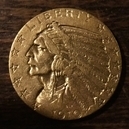

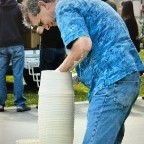
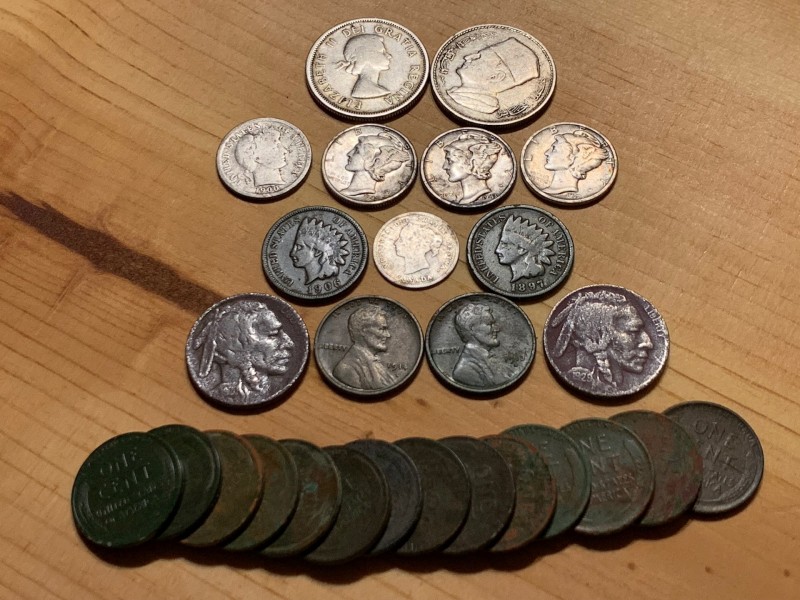
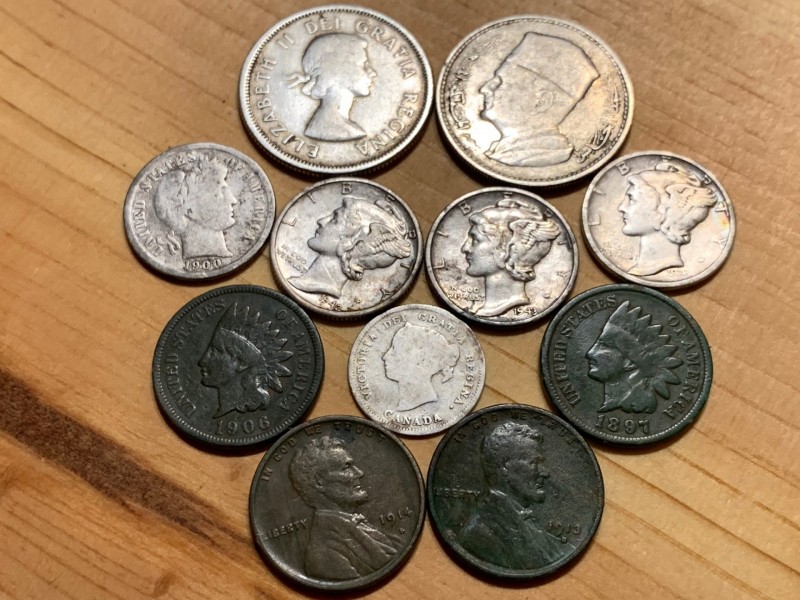
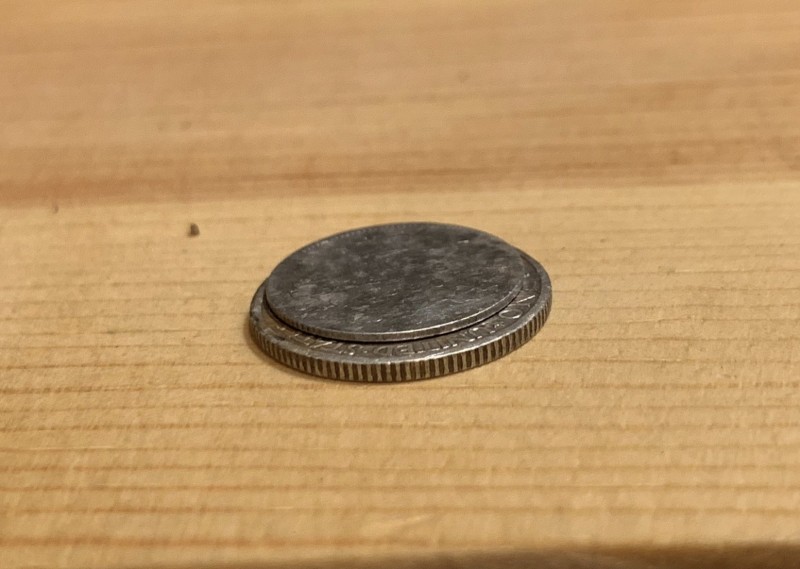
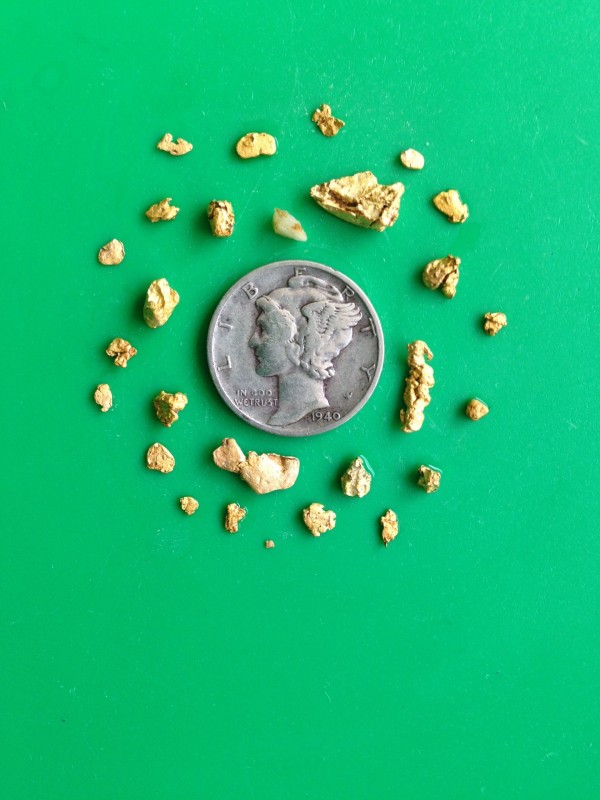
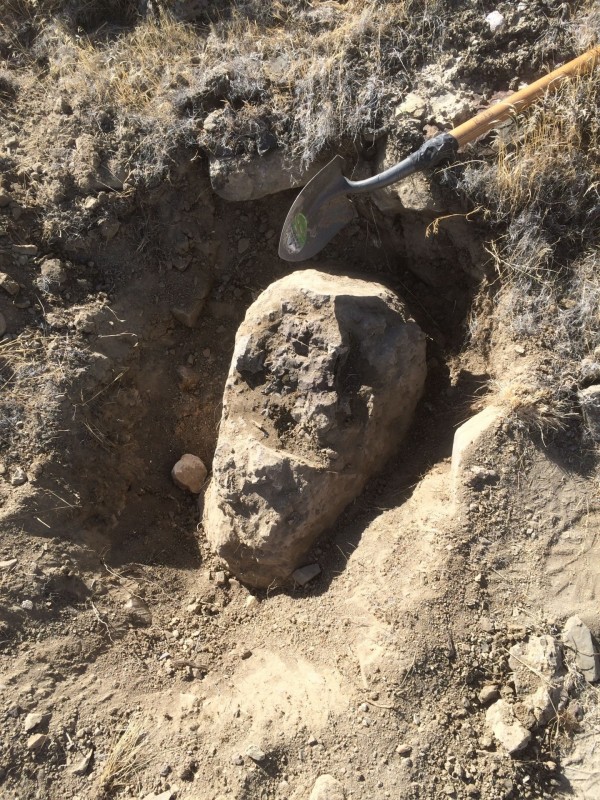
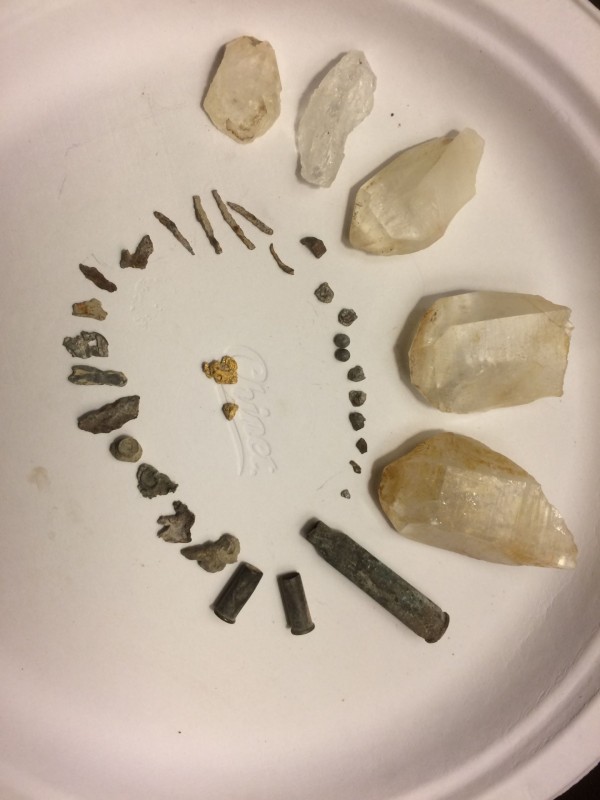
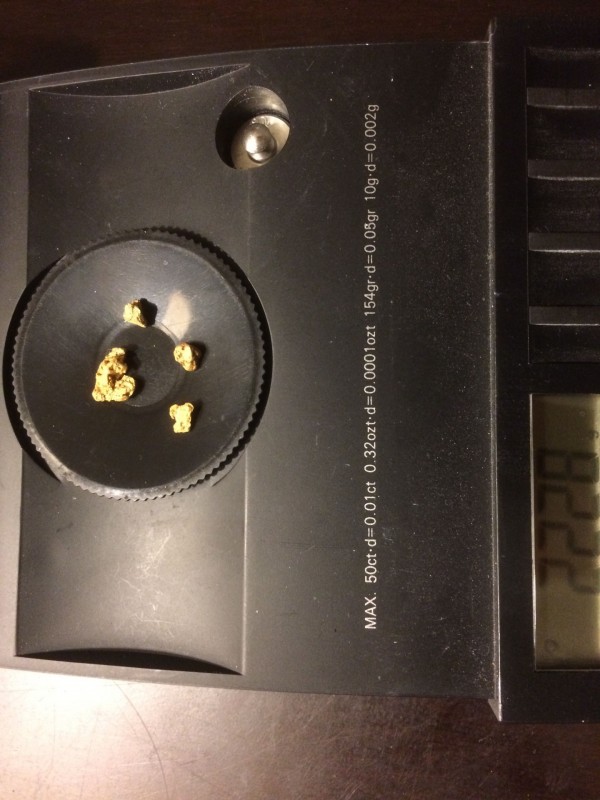
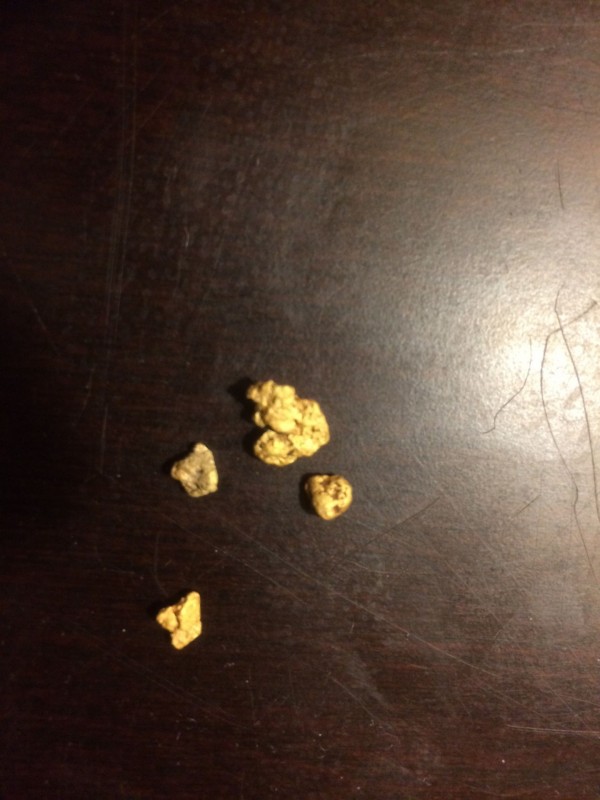
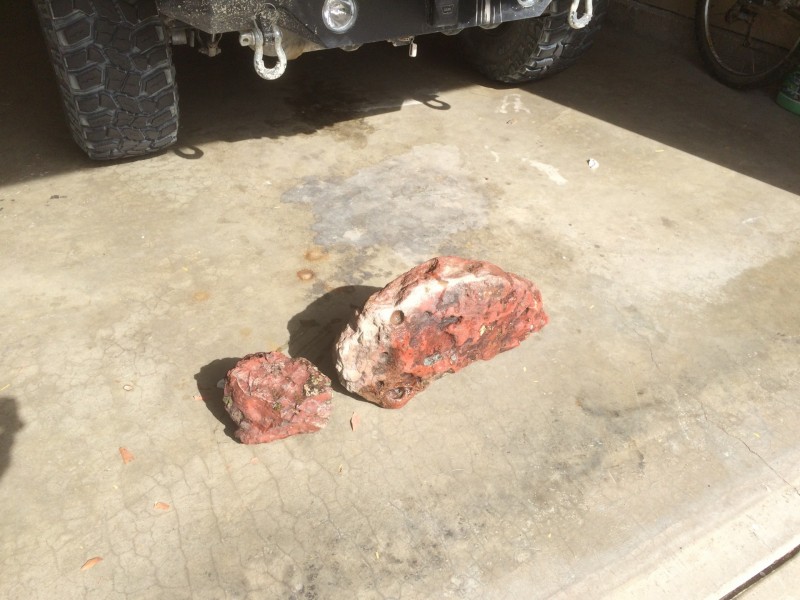

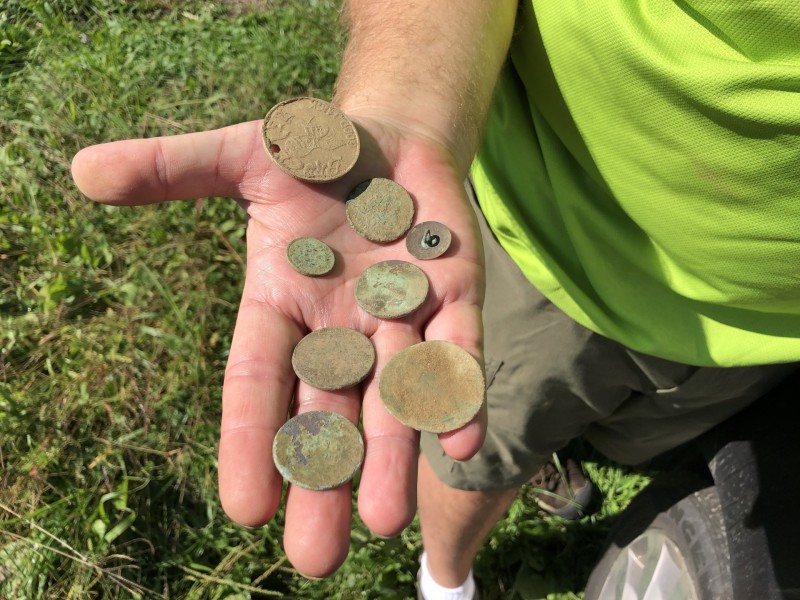
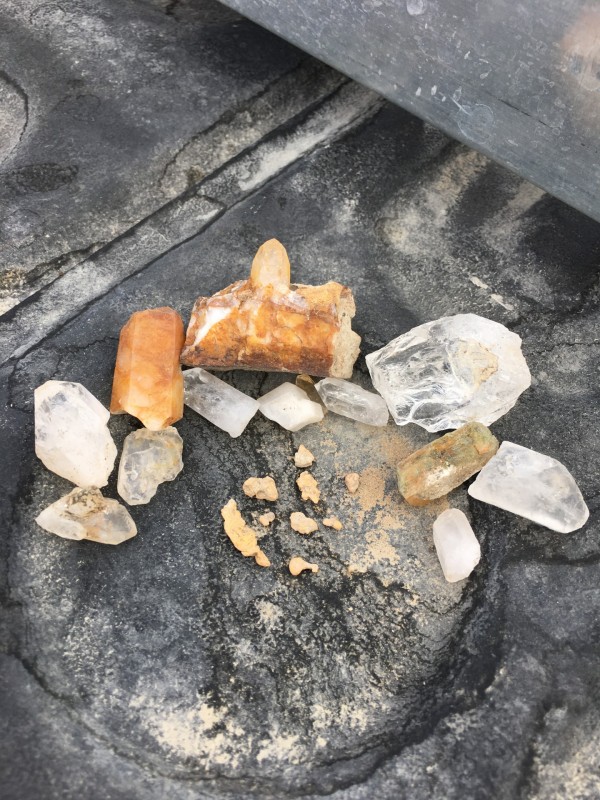
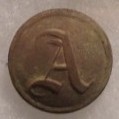
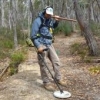


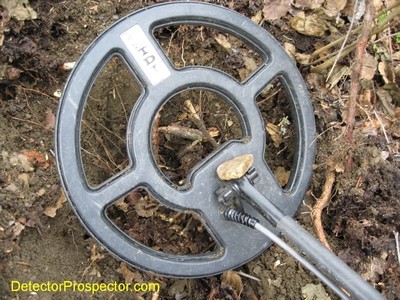

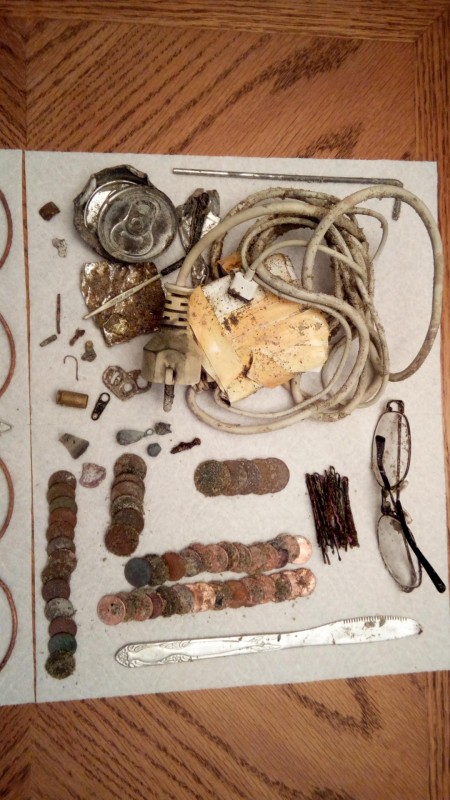
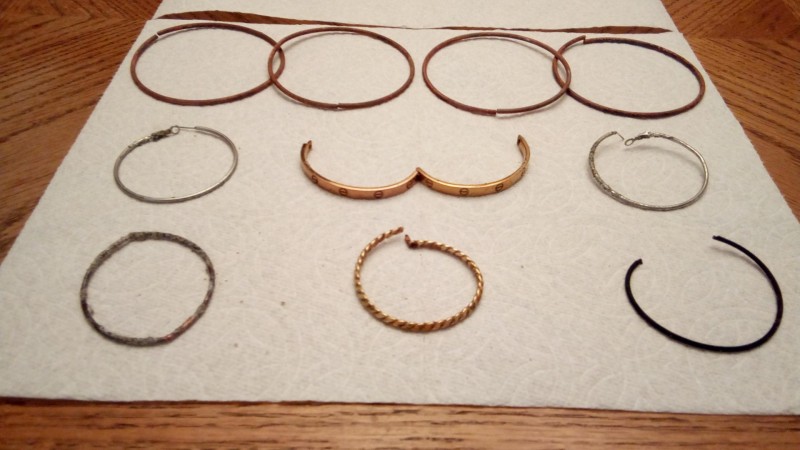
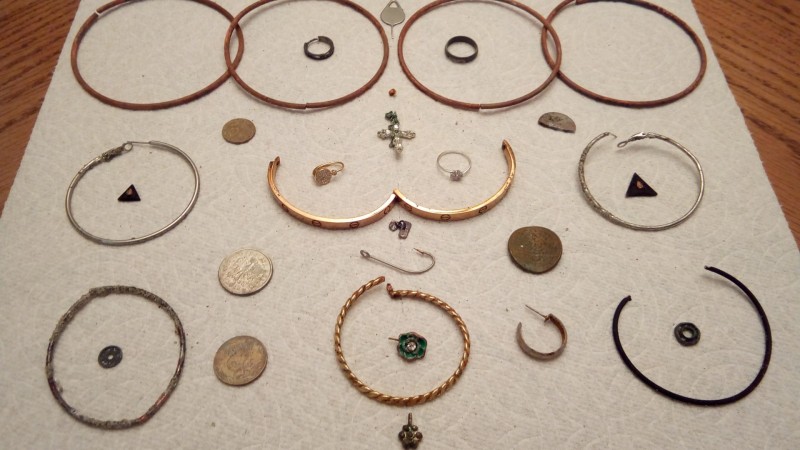
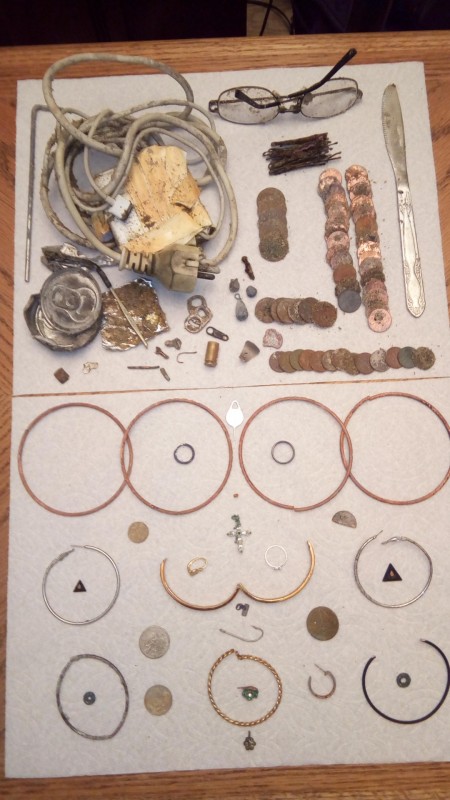
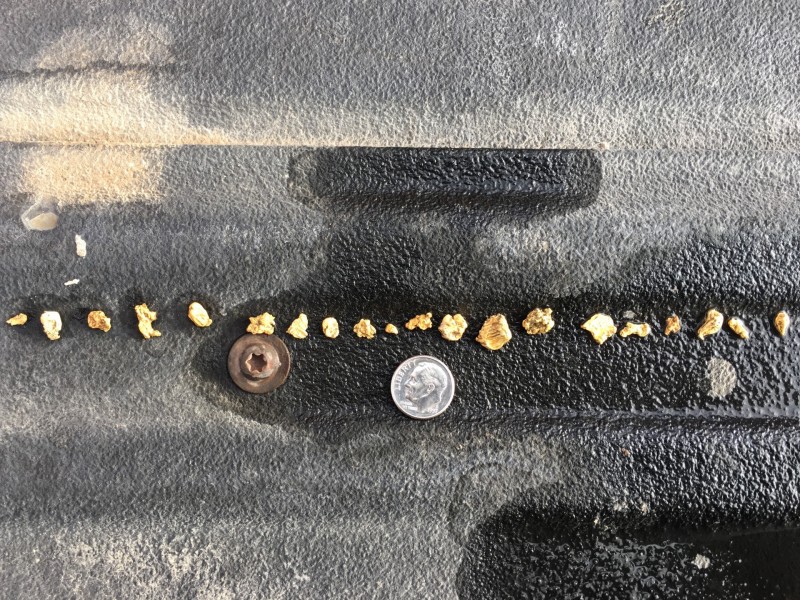



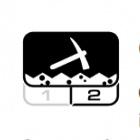


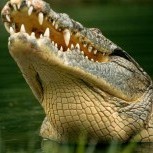
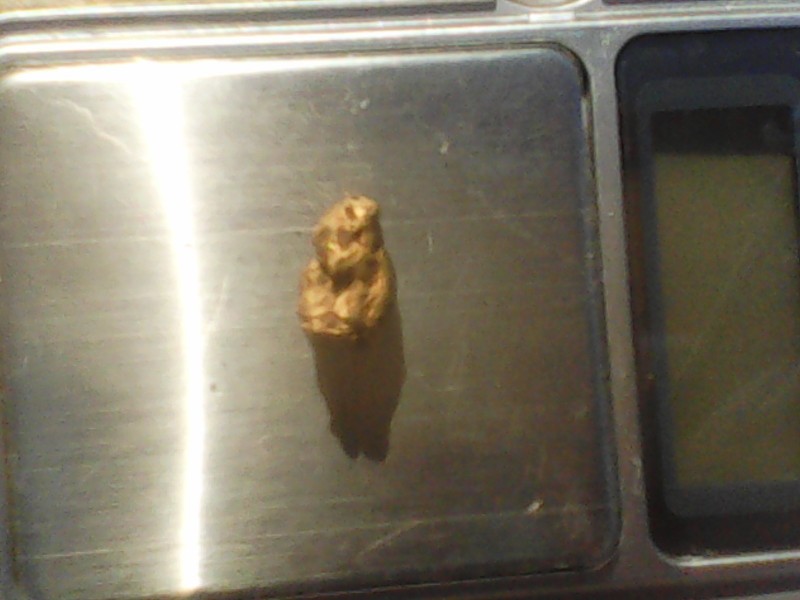
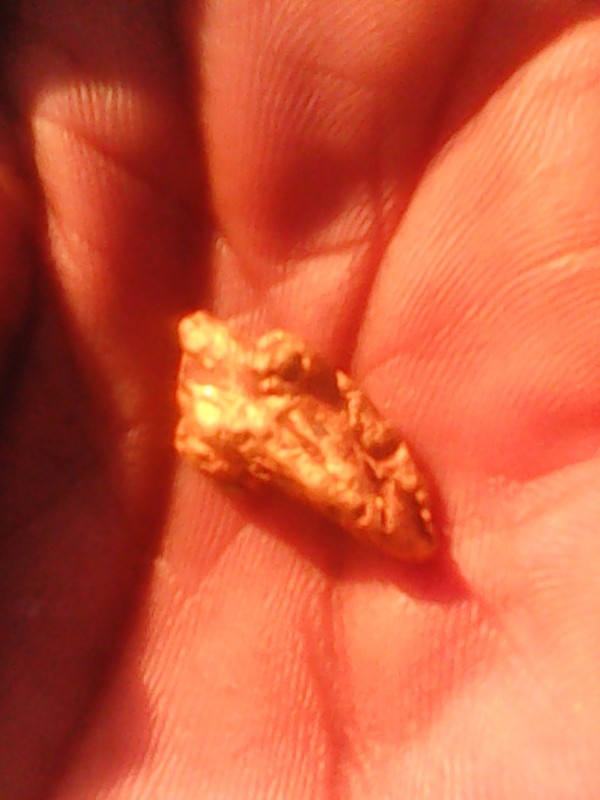
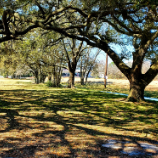
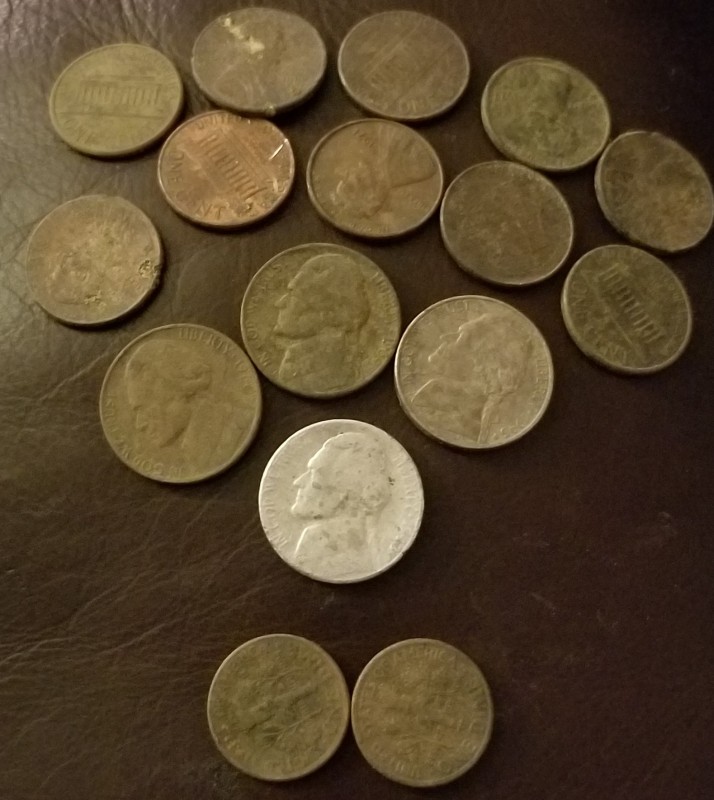
.jpg.d36fcd52325fe8a6a366d3944c8806e4.thumb.jpg.7439025c7a6d125b76c4d4495030cde4.jpg)
